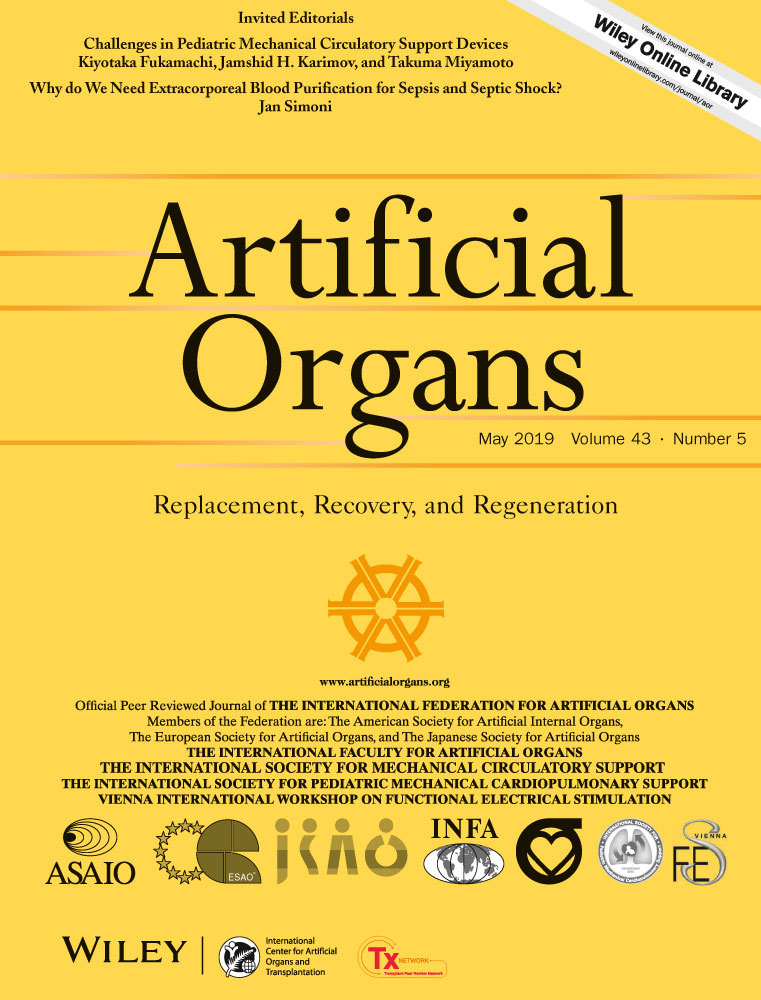Increasing the removal of protein-bound uremic toxins by liposome-supported hemodialysis
Funding information
National Natural Science Foundation of China, Grant/Award Number: 81270850 and 81470990; Science and Technology Commission of Shanghai Municipality, Grant/Award Number: 17441904200; Shanghai Pudong New Area Program, Grant/Award Number: PW2015D-4; Shanghai Ninth People’s Hospital Clinical Research Program, Grant/Award Number: JYLJ007; Shanghai Ninth People’s Hospital MDT Program, Grant/Award Number: 2017-1-019
Abstract
Protein-bound uremic toxins (PBUTs) accumulate at high plasma levels and cause various deleterious effects in end-stage renal disease patients because their removal by conventional hemodialysis is severely limited by their low free-fraction levels in plasma. Here, we assessed the extent to which solute removal can be increased by adding liposomes to the dialysate. The uptake of liposomes by direct incubation in vitro showed an obvious dose-response relationship for p-cresyl sulfate (PCS) and indoxyl sulfate (IS) but not for hippuric acid (HA). The percent removal of both PCS and IS but not of HA was gradually increased with the increased concentration of liposomes in a rapid equilibrium dialysis setup. In vitro closed circulation showed that adding liposomes to the dialysate markedly increased the dialysances of PBUTs without greatly altering that of urea and creatinine. In vivo experiments in uremic rats demonstrated that adding liposomes to the dialysate resulted in higher reduction ratios (RRs) and more total solute removal (TSR) for several PBUTs compared to the conventional dialysate, which was approximately similar to the addition of bovine serum albumin to the dialysate. These findings highlight that as an adjunct to conventional hemodialysis, addition of liposomes to the dialysate could significantly improve the removal of protein-bound uremic solutes without greatly altering the removal of small, water-soluble solutes.
CONFLICTS OF INTEREST
The authors have no conflicts of interest to declare.




